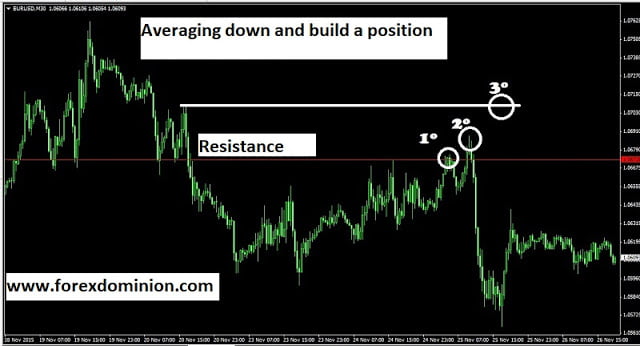Rob Booker is one of the most respected Forex traders in the world, with a lot of history behind him. The Forex strategy that I am going to present today is the system of Rob Booker, denominated Arizona System.
Rob, as all traders is evolving, and currently does not use this system, he is currently promoting his Trifecta system, but we must not forget that with this system he managed to convert $2500 in $100000, which means that this system is no so bad.
When a trader designs a Forex strategy, he does this to take advantage of a market anomaly, which usually gives us an advantage, and consequently benefits for our trading account.
This is not a usual strategy, I would consider it a trading system which joins several strategies under the same idea: define what is really happening in the market, and consequently, to act.
The market has two basic trends, bullish and bearish. There are also markets without a definite trend, where there is a lateral movement, which can be consolidation, accumulation, or distribution, but there are another times in the market, in which we really have no idea what is happening and there are not many opportunities for the trader. Rob intends to find and define through indicators, at what time we are in the market, and act using a Trading technique, or a different Trading strategy.
Rob Booker Trading System Indicators
At a time when it is becoming more popular to trade without indicators (naked trading), with price action, it seems a little contrarian, that we propose a system that is based on a lot of indicators, but this is the system of Rob Booker, and these are the indicators that Rob uses for his trading system:
- A simple moving average of 800 periods (SMA 800), which in the following price charts you will see in red.
- A simple average of 200 periods (SMA 200), which weI represented in dark blue.
- An exponential moving average of 62 periods (EMA 62), represented in gold color.
- The MACD in its classic version, 12-26-9, and lastly …
- One stochastic oscillator, set to 9-3-3. The system is designed to operate on 1-hour charts, although it is sometimes possible to use 15-minute charts and is intended to operate during the American session. The system could work in any session, but Rob trades in American time.
-Timeframes: The system is designed to trade on 1-hour charts, although it is sometimes possible to use 15-minute charts and is intended to operate during the American session. The system could work in any session, but Rob Booker trades in American time.
The phases to trade with the Arizona system The four phases that we can find and their characteristics are:
Lateral Market Phase – Tucson Phase
In this phase, the EMA 62, is located between the SMA 200 and the SMA 800. These moving averages indicate that the market moves sideways, and therefore we will trade looking for divergences of the MACD.
We will use bullish and bearish divergences, regardless of the previous trend. The profit target is placed in a moving average.
Market Phase ready to start a trend – Flagstaff Phase
We assume that a new bullish or bearish trend is about to begin, and we will trade any divergence against the trend we predict is beginning.
To take into account the new trend, the EMA 62 has to make a bullish or bearish cross of the SMA 800, while the SMA 200 remains above or below the SMA 800 without crossing it. We will trade any divergence that the MACD shows against the EMA 62 and the profit target is placed on the EMA 800.
Market in trend – Phoenix phase
To decide that the market is in a clear trend, we will have to see that the moving averages are completely aligned, either bearish or bullish, in order according to their time period.
For example, if the trend is bullish, the first moving average that would appear, which is the closest to the price, would be the EMA 62, then we would find the SMA 200, and last would be the SMA 800.
At this stage, we only trade the price breakouts and the pullbacks: breakouts of the American box in the direction of the main trend, or when the price does a pullback to the EMA 62.
During this market phase the divergences against the main trend are ignored.
Market without trend – Yuma phase
When moving averages come together, we find ourselves in a market period without a trend, and according to Rob Booker’s system, it is best to stay out of the way and wait for a trend to be defined. We do not trade with price breakouts, nor divergences.
If we want to continue operating, we could go down to a 15-minute time frame, and look for a lateral phase, that is, a Tucson phase.
As you can see, this system is actually a set of trading strategies, to operate according to what the market is telling us.










